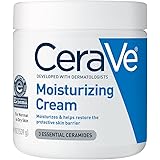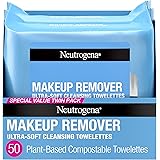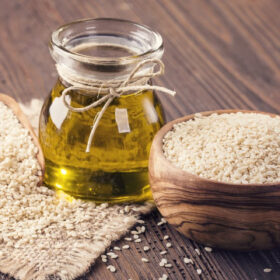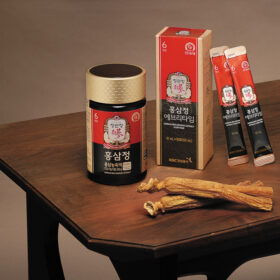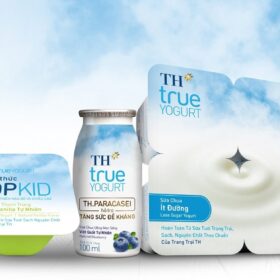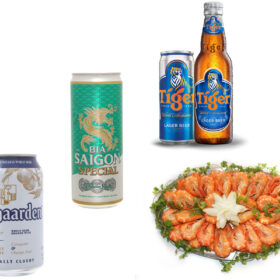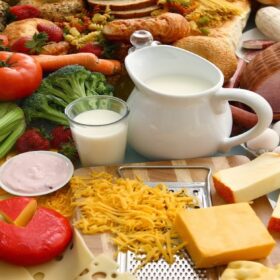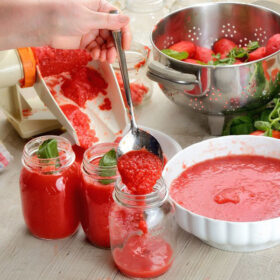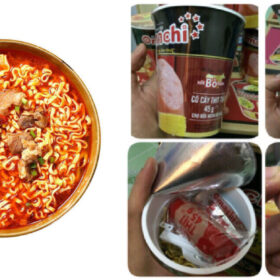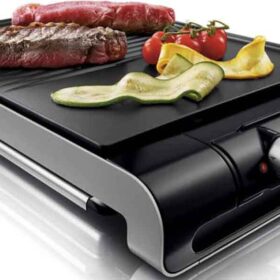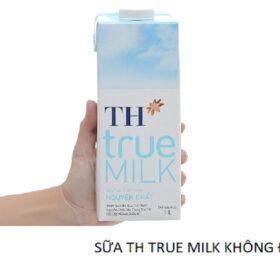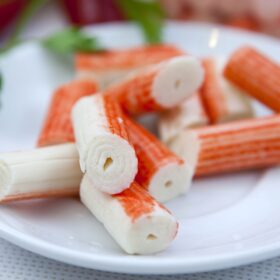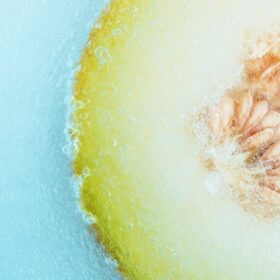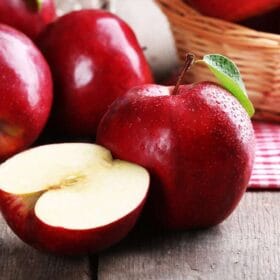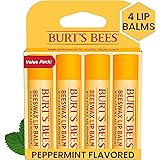Skip to main content in article(see)
Food can cause poisoning due to microbial contamination, chemical contamination, or the presence of toxins in the food itself. To proactively prevent food poisoning and limit diseases caused by eating and drinking, consumers need to follow some of the main instructions listed below.
1. Prevent poisoning due to microbial contaminated food.
Choose food that is fresh, still retains its inherent state, does not have color and taste changes or signs of rancidity. Choose fresh meat that has passed quarantine, the outside is dry and shiny, the meat is solid, when a finger presses into the meat it creates a dent but leaves no trace when the finger is removed. The viscera must be fresh from newly slaughtered or refrigerated animals, not pale in color, not have a rancid smell, and not have red spots or purple bruises. Choose fish that is alive or has just died but the eyes are still transparent, the gills are bright red, the fins are iridescent, the anus is deeply indented, the fish flesh is firm, elastic, tightly attached to the spine. Choose eggs with intact pink shells, transparent when viewed through light (may have pink dots in the middle), no black spots or gray streaks, and no rotten smell of spoiled eggs.

Schick Hydro Silk Touch-Up Dermaplaning Tool with Precision Cover, 3ct | Dermaplane Razor, Face Razors for Women, Eyebrow Razor, Facial Razor, Dermaplaning Razor, Womens Face Razor Peach Fuzz Remover
$5.45 (as of November 21, 2024 07:25 GMT +00:00 - More infoProduct prices and availability are accurate as of the date/time indicated and are subject to change. Any price and availability information displayed on [relevant Amazon Site(s), as applicable] at the time of purchase will apply to the purchase of this product.)CeraVe Daily Moisturizing Lotion for Dry Skin | Body Lotion & Face Moisturizer with Hyaluronic Acid and Ceramides | Daily Moisturizer | Fragrance Free | Oil-Free | 19 Ounce
$18.50 (as of November 21, 2024 07:25 GMT +00:00 - More infoProduct prices and availability are accurate as of the date/time indicated and are subject to change. Any price and availability information displayed on [relevant Amazon Site(s), as applicable] at the time of purchase will apply to the purchase of this product.)Clean Skin Club Clean Towels XL™, 100% USDA Biobased Face Towel, Disposable Face Towelette, Makeup Remover Dry Wipes, Ultra Soft, 50 Ct, 1 Pack
$17.95 (as of November 21, 2024 07:25 GMT +00:00 - More infoProduct prices and availability are accurate as of the date/time indicated and are subject to change. Any price and availability information displayed on [relevant Amazon Site(s), as applicable] at the time of purchase will apply to the purchase of this product.)CeraVe Hydrating Facial Cleanser | Moisturizing Face Wash For Dry Skin | Hyaluronic Acid + Ceramides + Glycerin | Hydrating Cleanser For Normal To Dry Skin | National Eczema Association Certified
$15.48 (as of November 21, 2024 07:25 GMT +00:00 - More infoProduct prices and availability are accurate as of the date/time indicated and are subject to change. Any price and availability information displayed on [relevant Amazon Site(s), as applicable] at the time of purchase will apply to the purchase of this product.)Neutrogena Makeup Remover Wipes, Ultra-Soft Cleansing Facial Towelettes for Waterproof Makeup, Alcohol-Free, Plant-Based, Twin Pack, 25 Count (Pack of 2)
$9.97 (as of November 21, 2024 07:25 GMT +00:00 - More infoProduct prices and availability are accurate as of the date/time indicated and are subject to change. Any price and availability information displayed on [relevant Amazon Site(s), as applicable] at the time of purchase will apply to the purchase of this product.)2. To separate raw ingredients and raw foods from cooked foods.
When shopping for food, you should choose to buy animal meat (including viscera), poultry, and fresh seafood, then put each type in separate plastic bags to isolate it from other foods. When you get home, if you do not have the conditions to process and cook immediately, you must put it in cold storage under suitable conditions. In the cold storage compartment, keep animal meat (including viscera), poultry, and fresh seafood at the bottom, because if there is fluid flowing out, it will not wet other foods. Do not use knives, cutting boards, spoons, plates… in contact with fresh foods to prepare salads, salads, cooked foods or vegetables and fruits eaten daily without heat treatment. Do not put cooked food in utensils that contain fresh ingredients such as animal meat (including viscera), poultry, aquatic products, chicken and duck eggs, etc.
3. Keep hands and eating utensils clean
People who directly process food should not have long nails or wear jewelry on their fingers because it is difficult to clean. Wash your hands with soap and clean water before eating and after preparing fresh foods (fish, eggs, poultry, livestock and viscera), after going to the toilet or doing other things that dirty your hands. Do not directly process food when you have an infection on your hands. Clean tools and contact surfaces after processing livestock meat (including viscera), poultry, and fresh seafood with soap water specifically used to wash eating utensils (ensuring hygiene and safety requirements). completely), rinse thoroughly with clean water and place on a shelf to avoid dust. Do not use bowls, plates, chopsticks, ladles, spoons, cutting boards… made of materials that are difficult to clean, are cracked, chipped or rusty, and do not use moldy towels to wipe eating utensils. Wash dishcloths, food processing towels, and hand towels with soap and clean water, and keep them separately to avoid confusion after each use.

VALITIC Kojic Acid Dark Spot Remover Soap Bars with Vitamin C, Retinol, Collagen, Turmeric - Original Japanese Complex Infused with Hyaluronic Acid, Vitamin E, Shea Butter, Castile Olive Oil (2 Pack)
$14.99 (as of November 21, 2024 07:25 GMT +00:00 - More infoProduct prices and availability are accurate as of the date/time indicated and are subject to change. Any price and availability information displayed on [relevant Amazon Site(s), as applicable] at the time of purchase will apply to the purchase of this product.)La Roche-Posay Toleriane Double Repair Face Moisturizer | Daily Moisturizer Face Cream with Ceramide and Niacinamide for All Skin Types | Oil Free | Fragrance Free
$23.99 (as of November 21, 2024 07:25 GMT +00:00 - More infoProduct prices and availability are accurate as of the date/time indicated and are subject to change. Any price and availability information displayed on [relevant Amazon Site(s), as applicable] at the time of purchase will apply to the purchase of this product.)Neutrogena Makeup Remover Wipes, Ultra-Soft Cleansing Facial Towelettes for Waterproof Makeup, Alcohol-Free, Plant-Based, Twin Pack, 25 Count (Pack of 2)
$9.97 (as of November 21, 2024 07:25 GMT +00:00 - More infoProduct prices and availability are accurate as of the date/time indicated and are subject to change. Any price and availability information displayed on [relevant Amazon Site(s), as applicable] at the time of purchase will apply to the purchase of this product.)eos Shea Better Body Lotion- Vanilla Cashmere, 24-Hour Moisture Skin Care, Lightweight & Non-Greasy, Made with Natural Shea, Vegan, 16 fl oz
$8.98 (as of November 21, 2024 07:25 GMT +00:00 - More infoProduct prices and availability are accurate as of the date/time indicated and are subject to change. Any price and availability information displayed on [relevant Amazon Site(s), as applicable] at the time of purchase will apply to the purchase of this product.)Mighty Patch™ Original patch from Hero Cosmetics - Hydrocolloid Acne Pimple Patch for Covering Zits and Blemishes in Face and Skin, Vegan-friendly and Not Tested on Animals (36 Count)
$12.99 (as of November 21, 2024 07:25 GMT +00:00 - More infoProduct prices and availability are accurate as of the date/time indicated and are subject to change. Any price and availability information displayed on [relevant Amazon Site(s), as applicable] at the time of purchase will apply to the purchase of this product.)4. Cook food and store it hygienically and safely
Cattle meat (including viscera), poultry, and fresh aquatic products must be cooked. If any raw parts are discovered, they must be boiled again until the pink color disappears. It is best to store cooked food at a temperature not exceeding 50 degrees Celsius. Boil slowly so that the food is evenly heated (above 70 degrees Celsius) before reusing. Do not eat blood pudding, undercooked meat, fish salad, or undercooked eggs.
Design a dining area isolated from sources of pollution, arrange a one-way kitchen, have enough clean water for cooking, washing hands and washing eating utensils. Eat as soon as the food has been cooked. Do not use packaged processed foods without a clear manufacturing address, that have expired, or are packaged with unsanitary materials. or torn, punctured, bulging, distorted, or rusty canned foods
. 
Aquasonic Black Series Ultra Whitening Toothbrush – ADA Accepted Electric Toothbrush- 8 Brush Heads & Travel Case – 40,000 VPM Electric Motor & Wireless Charging - 4 Modes w Smart Timer
$39.95 (as of November 21, 2024 07:25 GMT +00:00 - More infoProduct prices and availability are accurate as of the date/time indicated and are subject to change. Any price and availability information displayed on [relevant Amazon Site(s), as applicable] at the time of purchase will apply to the purchase of this product.)Mighty Patch™ Original patch from Hero Cosmetics - Hydrocolloid Acne Pimple Patch for Covering Zits and Blemishes in Face and Skin, Vegan-friendly and Not Tested on Animals (36 Count)
$12.99 (as of November 21, 2024 07:25 GMT +00:00 - More infoProduct prices and availability are accurate as of the date/time indicated and are subject to change. Any price and availability information displayed on [relevant Amazon Site(s), as applicable] at the time of purchase will apply to the purchase of this product.)CeraVe Daily Moisturizing Lotion for Dry Skin | Body Lotion & Face Moisturizer with Hyaluronic Acid and Ceramides | Daily Moisturizer | Fragrance Free | Oil-Free | 19 Ounce
$18.50 (as of November 21, 2024 07:25 GMT +00:00 - More infoProduct prices and availability are accurate as of the date/time indicated and are subject to change. Any price and availability information displayed on [relevant Amazon Site(s), as applicable] at the time of purchase will apply to the purchase of this product.)eos Shea Better Body Lotion- Vanilla Cashmere, 24-Hour Moisture Skin Care, Lightweight & Non-Greasy, Made with Natural Shea, Vegan, 16 fl oz
$8.98 (as of November 21, 2024 07:25 GMT +00:00 - More infoProduct prices and availability are accurate as of the date/time indicated and are subject to change. Any price and availability information displayed on [relevant Amazon Site(s), as applicable] at the time of purchase will apply to the purchase of this product.)Philips Sonicare ProtectiveClean 5300 Rechargeable Electric Toothbrush, with Pressure Sensor, 3 Cleaning Modes, SmarTimer and QuadPacer, with 2 Bonus Brush Heads, Travel Case, Black, Model HX6423/34
$59.96 (as of November 21, 2024 07:25 GMT +00:00 - More infoProduct prices and availability are accurate as of the date/time indicated and are subject to change. Any price and availability information displayed on [relevant Amazon Site(s), as applicable] at the time of purchase will apply to the purchase of this product.)5. Prevent poisoning due to food contaminated with toxic chemicals
Wash fruits and vegetables under running water before using. If the water source used for drinking is suspected of being contaminated, you must immediately notify the nearest health agency for timely measures. Isolate food from chemically contaminated air, soil, and water. Do not eat puffer fish, strange mushrooms or foods that have caused allergies.
Actively detect violations of hygiene and safety in production, business, and food processing. If the food has a color, shape, or taste that is suspected of not being safe, even if there is a fee to destroy it, it will still be less expensive than having to bear the costs of overcoming the consequences of poisoning caused by that food itself. should.







